Lightning Read online
Page 7
“No.”
“Elevator operator?”
“No.”
“So it’s just between me and them. The tenants, I mean.”
“And him,” Annie said.
“What about boyfriends and such? What about social clubs or other places where they know her?”
“She’ll be telling all her friends she’s going out of town. If anyone calls while you’re in the apartment, you’re the sister.”
“Suppose he calls?”
“He hasn’t yet, we don’t think he will. He’s not a heavy breather.”
“Different psychology,” Eileen said, nodding.
“We figure you can go wherever she was in the habit of going, we don’t think he’ll follow you inside. Go in, hang around, do your nails, whatever, then come out again. If he’s watching, he’ll pick up the trail again outside. It should work. I hope.”
“I never had one like this before.”
“Neither have I.”
“I’ll need a cross-checked breakdown,” Eileen said. “On Mary Hollings and the other two victims.”
“We’re working that up now. We didn’t think there was a pattern until now. I mean…”
Eileen detected a crack in the hard-nosed veneer.
“It’s just…”
Again Annie hesitated.
“These other two…one’s out in Riverhead, the other’s in Calm’s Point, it’s a big city. I didn’t realize till Saturday, after I talked to Mary Hollings…I mean, it just didn’t register before then. That these were serial rapes. That he’s hitting the same women more than once. Came to me like a bolt out of the blue. Now that we know there’s a pattern, we’re cross-checking similarities on these three victims we’re sure were attacked by the same guy, see if we can’t come up with anything in their backgrounds that might have singled them out. It’s a place to start.”
“You using the computer?”
“Not only for the three,” Annie said, nodding. “We’re running a check on every rape reported since the beginning of the year. If there are other victims who were serially raped…”
“When do I get the printouts?” Eileen asked.
“As soon as I get them.”
“And when’s that?”
“I know it’s your ass out there,” Annie said softly.
Eileen said nothing.
“I know he has a knife,” Annie said.
Eileen still said nothing.
“I’d no more risk your life than I would my own,” Annie said, and Eileen thought of facing down two armed robbers in the marbled lobby of a midtown bank.
“When do I start?” she asked.
The second hanging victim turned up in West Riverhead.
The 101st Precinct caught the squeal early on the morning of October 14. This was not the rosiest precinct in the world, but none of the cops up there had ever seen a body hanging from a lamppost before. They had seen all sorts of things up there, but never anything like this. They were amazed and astonished. It took a lot to amaze and astonish the cops of the One-Oh-One.
West Riverhead was just a short walk over the Thomas Avenue Bridge, which separated it from Isola. Half a million people lived on the far side of that bridge in a jagged landscape as barren as the moon’s. Forty-two percent of those people were on the city’s welfare rolls, and of those who were capable of holding jobs, only 28 percent were actually employed. Six thousand abandoned buildings, heatless and without electricity, lined the garbage-strewn streets. An estimated 17,000 drug addicts found shelter in those buildings when they were not marauding the streets in competition with packs of wild dogs. The statistics for West Riverhead were overwhelming—26,347 new cases of tuberculosis reported this past year; 3,412 cases of malnutrition; 6,502 cases of venereal disease. For every hundred babies born in West Riverhead, three died while still in infancy. For those who survived, there was a life ahead of grinding poverty, helpless anger, and hopeless frustration. It was places like West Riverhead that caused the Russians to gloat over how far superior for the masses was the Communist system. Compared to West Riverhead, the 87th Precinct territory was a dairy farm in Wisconsin.
But Carella and Hawes were up here now because a smart detective on the 101st Squad remembered reading something about a girl hanging from a lamppost in the Eight-Seven, and he promptly called downtown to inform the detectives that they had another one, nobody being eager to step on the toes of somebody already investigating a case, and anyway who the hell needed a hanging victim in West Riverhead where there was enough crime up here to keep the cops busy twenty-eight hours a day? Exotic? Terrific. Who needed exotic? Better to let the Eight-Seven pick up the pieces.
Carella and Hawes got there at a little past 7:00 in the morning.
The Homicide team had already come and gone. In this city, any crime, big or small, felony or misdemeanor, was left to the precinct that caught the initial squeal—unless another precinct had already caught the squeal on an obviously related crime. With a murder, the Homicide Division carefully watched over the shoulders of the investigating precinct detectives, lending their expertise where necessary, but the case technically belonged to the responding officers, with Homicide serving as a sort of clearinghouse. Carella and Hawes were the fortunate responding officers on another bright October day that could easily have broken the heart.
A detective named Charlie Broughan was still at the scene; Carella had worked with him before on a gang-related series of murders. There were an estimated 9,000 teenage street-gang members within the confines of the 101st. Maybe that’s why Charlie Broughan looked so tired all the time. Or maybe working the Graveyard Shift up here was worse than working it anyplace else in the city. Broughan looked even wearier than he had the last time Carella saw him, a big beefy cop with a thatch of unruly brown hair and a two days’ growth of beard stubble on his face. He was wearing a pale blue windbreaker, dark blue slacks, and loafers. He recognized Carella at once, came over to him, shook hands with him, and then shook hands with Hawes.
“Sorry to bother you with this shit,” he said, “but I guess by the regs it’s yours.”
“It’s ours, all right,” Carella said, and looked up at the body.
“The last one was a girl, too, huh?” Broughan said.
“Yeah,” Carella said.
“We didn’t cut her down yet, the ME and everybody’s still waitin’. Didn’t know how you wanted to handle this.”
“Mobile Crime here yet?” Hawes asked.
“Yeah,” Broughan said. “Well, they were a minute ago. They probably went out for some coffee.”
“We want to save the knot,” Carella said. “Anywhere midway up the rope’ll be fine.”
“I’ll tell the Emergency boys,” Broughan said.
Carella was glad there was no one there to comment on the color of the girl’s panties, which happened to be a blue as electric as the sky spreading wide and clear above the lamppost. He watched as Broughan walked over to the emergency van. The emergency cops took their time getting out their ladder, net, and bolt cutter. It was too early in the morning to work up a sweat.
“Who found her?” Carella asked Broughan.
“Got a call from an honest citizen,” Broughan said, “which up here is a miracle. On his way to work—he lives about eight blocks over, in an area that ain’t burned out yet—was driving by and spotted her hanging there. Actually called us, can you believe it?”
“What time was this?” Hawes asked.
“Clocked it in at six-oh-four. I thought the shift was about to end, I was already typing up my reports. Bang, we got somebody hanging from a lamppost.” He reached into his jacket pocket, and pulled out an evidence envelope. “You’ll want this,” he said. “Found it under the lamppost.”
“What is it?”
“The girl’s wallet, I guess. I didn’t open it, didn’t want to smear anything. But I don’t know any men who carry red wallets, do you?”
The emergency cops were cutting her down. She dr
opped suddenly, her skirt ballooning out over her long legs as she fell. The net sagged with her dead weight. The emergency cops lowered the net to the ground.
“Wasn’t taking any chances on anybody seeing him do the job, was he?” Broughan said. “Ain’t nothing in these buildings but rats, dog shit, and cockroaches.”
The assistant ME walked over, looking bored.
Five minutes later, he expressed his opinion that the girl was dead, and that the probable cause was fracture of the cervical vertebrae.
Her name was Nancy Annunziato.
A card in her wallet identified her as a student at Calm’s Point College, one of the city’s five tuition-free colleges. CPC was away over at the other end of the city, across the Calm’s Point Bridge and the River Dix, at least an hour by car from Riverhead, an hour and a half if you took the subway. The detectives did not think anybody in his right mind would have carried a dead body on the subway, however bizarre the system had become over the years, however inured its riders had become to peculiar happenings underground. But assuming the girl had been killed elsewhere (as had supposedly been the case with Marcia Schaffer) and further assuming that the body had then been transported here to this lovely garden spot of the city, the murderer had come a hell of a long way in an attempt to cover his tracks. Why, then, had he left behind a wallet with the girl’s identification in it?
The call to Manhattan, Kansas, informing Marcia Schaffer’s father of her death, had been painful enough, but Carella had not had to look him in the eye when he gave him the news. This one would be more difficult. According to the ID card in her wallet, the girl had lived in Calm’s Point, not far from the school, and presumably with her parents. This one would be face-to-face. This one would hurt both ways. He was glad Hawes would be with him, and not a jackass like Genero. Genero had once asked the wife of a murder victim if she had already arranged for a funeral plot: “It’s always best to think of such things far in advance,” Genero had told her. He later told Carella that his mother had already purchased funeral plots for herself and his father. “With lifetime maintenance,” he’d said. Carella had wondered whose lifetime?
They got caught in rush-hour traffic on the way to Calm’s Point, and the ride took them an hour and fifteen minutes. They did not know how bad the confrontation would be until they arrived at the house and discovered that Mr. Annunziato had suffered a heart attack only yesterday and was at the moment in the Intensive Care Unit at Saint Anthony’s Hospital, some six blocks away. The neighborhood was largely Italian, a bustling ghetto that reminded Carella of the one in which he’d been born and raised. The street cries, the shouted greetings, even the clapboard two-story houses with their fig trees, all brought a rush of memory that was somehow as painful as the task that lay before him. There were no babies crying on this tree-shaded street; you never heard a baby crying in an Italian neighborhood. Whenever an Italian baby showed the slightest sign of bursting into tears, there was always a mother, an aunt, a cousin or a grandmother there to pick him up and console him. Mrs. Annunziato looked like Carella’s Aunt Amelia; the resemblance only made his job more difficult.
She had thought at first that they were there to investigate the automobile accident. Her husband had been driving a car when he’d had his heart attack, and he’d smashed into another car when he lost control of the vehicle. This was how she happened to tell them, the moment they identified themselves, that he was now in intensive care, with a mild concussion in addition to the heart attack. They now had to tell her that her daughter was dead.
Hawes busied himself looking at his shoes.
Carella broke the news to Mrs. Annunziato, partially in English, partially in Italian. She listened carefully and disbelievingly. She asked for details; she was certain they were making a mistake. They showed her the dead girl’s wallet. She identified it positively. They were reluctant to show her the Polaroids taken at the scene; they did not want to risk yet another heart attack. She finally burst into tears, rushing into the house to get her mother, who came out not a moment later—a short, gray-haired Italian woman dressed entirely in black, she herself crying as she pressed the detectives for yet more details. The women stood hugging each other and weeping on the sidewalk in front of the house. A crowd had gathered. An ice cream truck’s bells tinkled in the bright October stillness of the tree-shaded street.
“Signore,” Carella said, “scusami, ma ci sono molti domande…”
“Si, capisco,” Mrs. Annunziato said. “Parla Inglese, per piacere.”
“Grazie,” Carella said, “il mio Italiano non e il migliore. I have to ask these questions if we’re to find who did this to your daughter, lei capisce, signore?”
The grandmother nodded. She was embracing Mrs. Annunziato, clinging to her, patting her, squeezing her, comforting her.
“When did you see her last?” Carella asked. “L’ultima volta che…”
“La notte scorsa,” the grandmother said.
“Last night,” Mrs. Annunziato said.
“A che ora?” Carella asked. “What time was that?”
“Alle sei,” the grandmother said.
“Six o’clock,” Mrs. Annunziato said. “She just come home from the school. She was practice.”
“Scusi?” Carella said. “Practice?”
“Si, era una corridora,” the grandmother said.
“Corridora?” Carella said, not understanding the word.
“A runner,” Mrs. Annunziato said. “She was on the team, cognesce? Come si chiama? La squadra di pista, capisce? La pista… how do you say? The track. She was on the track team.”
There were two packets from the Police Laboratory waiting for them when they got back to the squadroom. It was still only 11:00 in the morning. Both men had been working the Graveyard Shift when the call had come from the 101st. They were supposed to be relieved at a quarter to 8:00, but it was now 11:00, and the lab report was on Carella’s desk, and another dead girl was awaiting autopsy in the morgue at Mercy General. In the new-penny brilliance of the squadroom, burnished October sunlight streaming through grill-covered windows opened wide to the street outside, they broke open the seal on the first packet. Meyer Meyer was sitting at his own desk, typing, his hairpiece rakishly askew on top of his head. Hawes kept looking across the room to stare at the wig. Meyer pretended he didn’t know he was being observed.
The first packet contained a report on the rope section and the hangman’s knot recovered at the scene, together with a report on the photographs of the knot fastening the other end of the rope to the lamppost. The rope was fashioned of a fiber called sisal, a product of the agave plant, which grew in the Indies and in some parts of Africa. Sisal rope was not quite as strong as Manila rope, which came from the abaca plant in the Philippines. A Manila rope with a one-and-a-half-inch diameter could lift a weight of 2,650 pounds. But sisal was a widely used substitute for the stronger rope, and Marcia Schaffer had weighed only 124 pounds. The rope used in the hanging was the most common type: a three-strand rope that could not support as much weight as a four-strand, and nowhere near as much weight as a so-called cable-laid rope. Again, Marcia Schaffer had weighed only 124 pounds.
The technician writing the report went to great lengths explaining that the fibers on the rope clearly indicated in which direction a rope had been pulled. In a legal hanging, or in a true hanging suicide, a person dropped downward when the support was pulled or kicked from under his feet. This downward motion caused the fibers of the rope to rise in a direction opposite to the fall. Conversely, if a person had been hauled up by rope over some sort of substructure like a tree branch, or in this case, the arm of a lamppost, the fibers rose in a direction opposite to the pulling or lifting motion. As regarded the direction of fibers in general, the technician quoted a rule to the effect that drop down resulted in fibers up, and pull up caused fibers down.
Carella and Hawes shrugged; this was all old stuff to them.
The technician went on to explain that if the fiber d
irection on any given rope seemed at first glance to support a finding of “true hanging” this might not necessarily be valid since the murderer might have first manually lifted an already dead body and only later manipulated the noose around its neck. This was enormously difficult to do, however, since a corpse was heavy and limp and clumsy to maneuver. Besides, the arm of the lamppost in this case was some twenty-five feet above the street. Given the height of the lamppost arm, then; given as well the downward direction of the rope fibers, the technician could only conclude that the killer had fastened the noose around the neck of the corpse, thrown the rope over the lamppost arm, and then hauled the body up, tying the loose end of the rope around the supporting post some five feet above the base.
The technician went on to report that the knot removed from behind the dead girl’s neck was a true hangman’s knot, the sort used in legal hanging executions. In essence, it was a variation of a slip knot, sometimes called a running knot—
Both detectives turned to look at each other when they came to the word “running”…
—fashioned for the executioner’s purposes into a noose with eight or nine turns of rope above it. In this case, there were nine turns.
The technician had not expected to find any latent prints on either the rope or the knot, and he was not disappointed. He had, however, recovered fibers that when examined under the microscope were discovered not to be sisal fibers, and which he had ascertained were fibers consisting of 55 percent wool and 45 percent polyester. In addition, he had found particles of human epidermis clinging to the coarse rope of the knot, and he had identified these as unpigmented skin, or, in short, skin from a white man.
The photograph of the knot tied around the lamppost—actually, the technician pointed out (intending no pun), it was not a knot but instead a hitch, commonly used to tie a rope to a ring, a post, or a spar. The hitch, then, that had fastened the end of the rope to the lamppost was called a half hitch. In the technician’s opinion, the killer had chosen this particular hitch because it could be tied easily and swiftly, even—as in this case—when two half hitches were used in concert. It was not as strong or as safe as a timber hitch, for example, but taking into consideration the fact that the killer had 124 pounds of dead weight dangling from the other end of the rope, speed and facility must have been a prime consideration. The technician concluded the report by mentioning that the half hitch was a knot familiar to virtually every sailor or fisherman on the face of the earth.

 Alice in Jeopardy: A Novel
Alice in Jeopardy: A Novel The Frumious Bandersnatch
The Frumious Bandersnatch The McBain Brief
The McBain Brief He Who Hesitates
He Who Hesitates Mischief
Mischief Fat Ollie's Book: A Novel of the 87th Precinct
Fat Ollie's Book: A Novel of the 87th Precinct A Matter of Conviction
A Matter of Conviction Ice
Ice Even the Wicked
Even the Wicked Hark!
Hark! Long Time No See
Long Time No See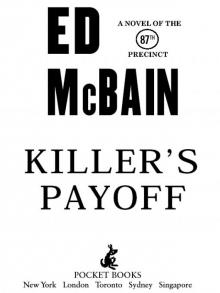 Killer's Payoff
Killer's Payoff Murder in the Navy
Murder in the Navy A Horse’s Head
A Horse’s Head So Nude, So Dead
So Nude, So Dead Nobody Knew They Were There
Nobody Knew They Were There Alice in Jeopardy
Alice in Jeopardy 87P14-Lady, Lady, I Did It!
87P14-Lady, Lady, I Did It!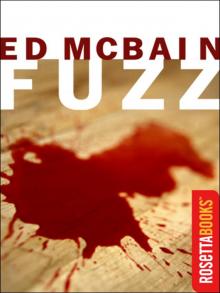 Fuzz
Fuzz Jack and the Beanstalk (Matthew Hope)
Jack and the Beanstalk (Matthew Hope) Ghosts
Ghosts Like Love
Like Love Cut Me In (Hard Case Crime)
Cut Me In (Hard Case Crime) The Heckler
The Heckler Give the Boys a Great Big Hand
Give the Boys a Great Big Hand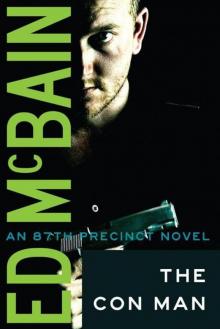 The Con Man
The Con Man Masters of Noir: Volume One
Masters of Noir: Volume One Money, Money, Money
Money, Money, Money Lightning
Lightning Ax
Ax The Spiked Heel
The Spiked Heel Scimitar
Scimitar Every Little Crook and Nanny
Every Little Crook and Nanny Criminal Conversation
Criminal Conversation Doors
Doors The Jungle Kids
The Jungle Kids Hail to the Chief
Hail to the Chief Pusher
Pusher Killer's Choice
Killer's Choice Transgressions Volume 2
Transgressions Volume 2 King's Ransom
King's Ransom The Last Dance
The Last Dance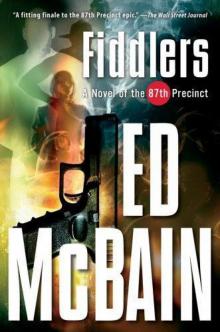 Fiddlers
Fiddlers Don’t Crowd Me
Don’t Crowd Me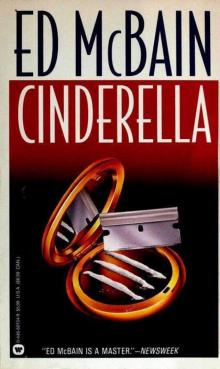 Cinderella
Cinderella Eight Black Horses
Eight Black Horses Big Man
Big Man Vanishing Ladies
Vanishing Ladies Lullaby
Lullaby Privileged Conversation
Privileged Conversation Transgressions, Volume 4
Transgressions, Volume 4 The Mugger
The Mugger Tricks
Tricks Shotgun (87th Precinct)
Shotgun (87th Precinct) Hail, Hail, the Gang's All Here!
Hail, Hail, the Gang's All Here! Ten Plus One
Ten Plus One Fat Ollie's Book
Fat Ollie's Book See Them Die
See Them Die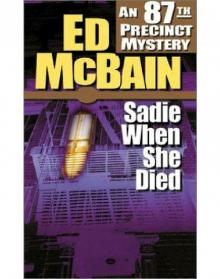 Sadie When She Died
Sadie When She Died Til Death
Til Death Transgressions Vol. 3: Merely Hate/Walking the Line/Walking Around Money
Transgressions Vol. 3: Merely Hate/Walking the Line/Walking Around Money And All Through the House
And All Through the House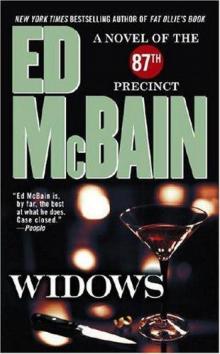 Widows
Widows Cop Hater
Cop Hater Transgressions
Transgressions